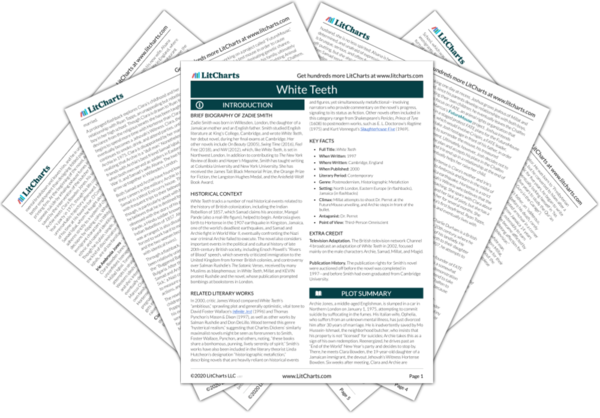The FutureMouse is Marcus Chalfen’s genetic experiment, a mouse with altered DNA that Marcus uses to demonstrate the progression of disease and aging. The mouse’s genetic makeup is changed so that certain traits associated with the disease develop at a predictable rate: Chalfen’s idea is to exercise total control over a being, its characteristics, its development, and, ultimately, its death. The mouse is a point of extreme contention throughout the novel, fiercely debated by animal rights activists, fundamentalist Muslims, and Jehovah’s Witnesses, all of whom see Marcus’s goal of complete control as dangerous and counterproductive—either because the project is harmful to animals or, for the religious groups, because it directly challenges God’s power and authority. Though Marcus (and Magid, who becomes his assistant) is firmly convinced of the scientific value of the experiment, the project has sinister undertones, similar to Dr. Marc-Pierre Perret’s genetic experiments for the Nazis—designed to wipe out non-Aryan races by strictly controlling the gene pool. (Indeed, Dr. Perret is Marcus’s mentor, and Marcus mentions that the doctor has taught him “everything he knows” about science.) Ultimately, the FutureMouse project fails, since in the struggle that ensues at the launch event—Millat’s attempted assassination of Dr. Perret—the mouse escapes from its cage, suggesting that Marcus is not able to exercise complete control over its destiny or will.
Thus, the FutureMouse seems to stand in for marginalized people who are targeted as populations to be controlled, including many of the non-white characters in the novel, who are frequently the subject of racist microaggressions: in the presence of the Iqbals and Irie and Clara Jones, native British people complain openly about the number of brown and black people that have “invaded” London, using the same kind of rhetoric that Nazis used to justify their program of racial elimination. By escaping at the novel’s conclusion, the FutureMouse defies its own oppression, suggesting that the novel’s non-white characters can resist subjugation, too, even when faced with forces of prejudice, racism, and outright evil. Indeed, the novel ends happily for the intertwined Iqbal, Bowden, and Chalfen families, who find ways to coexist peacefully in British society, despite its challenges and widespread xenophobia. The novel proposes no easy to solution to racism or anti-immigrant attitudes, but it does suggest that people of color can find and claim independence for themselves, like the FutureMouse.
The FutureMouse Quotes in White Teeth
Every moment happens twice: inside and outside, and they are two different histories. Archie does recognize the name, faintly, somewhere inside, but he is already twisting in his seat by then, trying to see if Samad is returning. He can’t see Samad. Instead he spots Millat, who looks funny. Who looks decidedly funny. Peculiar rather than ha-ha. He’s swaying ever so slightly in his seat, and Archie can’t catch his eye for a you-all-right-mate look because his eyes are locked on to something and when Archie follows the path of this stare, he finds himself looking at the same peculiar thing: an old man weeping tiny tears of pride. Red tears. Tears Archie recognizes.
Archie, for one, watched the mouse. He watched it stand very still for a second with a smug look as if it expected nothing less. He watched it scurry away, over his hand. He watched it dash along the table, and through the hands of those who wished to pin it down. He watched it leap off the end and disappear through an air vent. Go on my son! thought Archie.












